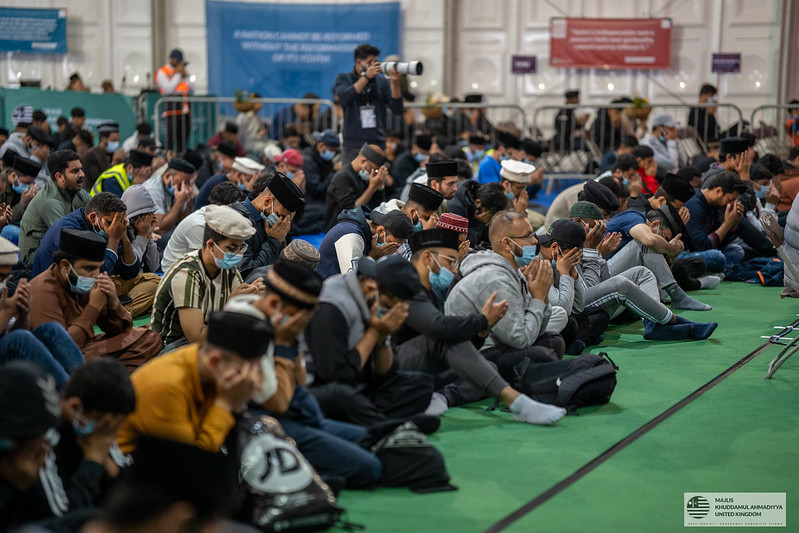
The Revelation of the Holy Qur’an
In this series of insights on the MKA Theme, we present a timeline adapted from the second edition of Tariq Magazine (coming out soon).
The process of studying and learning the Holy Qur’an is one of the most spiritual journeys one can continuously adopt.
In essence, the Promised Messiah (as) states: “We must take advantage of every instance in the Holy Qur’an so we can attain spiritual progress. Where the Holy Qur’an has instructed us to demonstrate a moral, we should do so, and where the Qur’an prohibits a certain deed, we should stop ourselves from doing so.”
Hazrat Khalifatul Masih V (May Allah be his Helper) has stated: “If one wishes to draw closer to God and attain His pleasure, then they must also bear in mind that the Holy Qur’an is the only means to do so.”
Hazrat Khalifatul Masih V (May Allah be his Helper) further states: “Nonetheless, we are united in language through the Holy Qur’an because we use the Arabic language in our prayers, no matter what background we come from.”
Below is a timeline of the revelation of the Holy Qur’an. Understanding the history of the Qur’an is a crucial element in supporting one’s spiritual journey in learning and studying the words of Allah the Almighty.
Hadrat Jibreel (as) (Gabriel) brings the first verses to the Holy Prophet (sa) in the Cava of Hira during the month of Ramadan
اِقْرَأْ بِاسْمِ رَبِّكَ الَّذِي خَلَقَ ۚ﴿۲﴾

The Quran was revealed over a period of 23 years. The revelation was written on materials like parchment, leather and bones and was also memorized by the companions of the Holy Prophet (sa).
Following the migration to Medina in 622 CE, scribes like Hazrat Zaid bin Thabit (ra) were appointed to recover revelations systematically.

On the 9th of Dhu al-Hijjah, Farewell Pilgrimage. This verse was revealed:
اَلۡیَوۡمَ اَکۡمَلۡتُ لَکُمۡ دِیۡنَکُمۡ...
"This day I have perfected for you your religion..."
(Surah Al Ma'idah, Chapter 5, Verse 4)
Showing Allah had completed his favour upon humanity.

12 Rabi’ al-Awwal
The Qur'an is complete but remains scattered across memorized portions and written materials.

During the caliphate of Hazrat Abu Bakr (ra), many Qur'an memorizers (huffaaz) are martyred at the Battle of Yamama, raising concerns about preservation.
Hazrat Umar bin Khattabra urges Hadrat Abu Bakrra to compile the Qur'an in written form.

زُبَيْر
Hazrat Zaid bin Thabit (ra) is given the task of compiling the Qur'an, which took over a decade to complete. Written fragments are collected, verified, and compiled into a single manuscript, (mushaf) which is also cross-checked by huffaaz.
حضرت زُبَيْر رضي الله عنه
The first manuscript is entrusted to Hadrat Hafsa bint Umar (ra), the daughter of Hadrat Umar bin Khattab (ra) and one of the Holy Prophet's (sa) wives.

حضرت عُثْمَان
In the caliphate of Hazrat Uthman (ra) variations in Qur'anic recitation prompt standardization. Hazrat Zaid bin Thabit (ra) and a committee prepare official copies based on Hafsa's manuscript. Standardized copies are distributed to key regions (Mecca, Medina, Kufa, Basra, Damascus).Non-standard versions are destroyed.

Addition of Harakat and Diacritical Marks: To facilitate recitation, vowel markings (harakat) and diacritical dots are introduced by scholars like Al- Hajjaj ibn Yusuf and others.
اِنَّا نَحۡنُ نَزَّلۡنَا الذِّکۡرَ وَاِنَّا لَہٗ لَحٰفِظُوۡنَ ﴿۱۰﴾
In the caliphate of Hazrat Uthman (ra) variations in Qur'anic recitation prompt standardization. Hazrat Zaid bin Thabit (ra) and a committee prepare official copies based on Hafsa's manuscript. Standardized copies are distributed to key regions (Mecca, Medina, Kufa, Basra, Damascus).Non-standard versions are destroyed.


